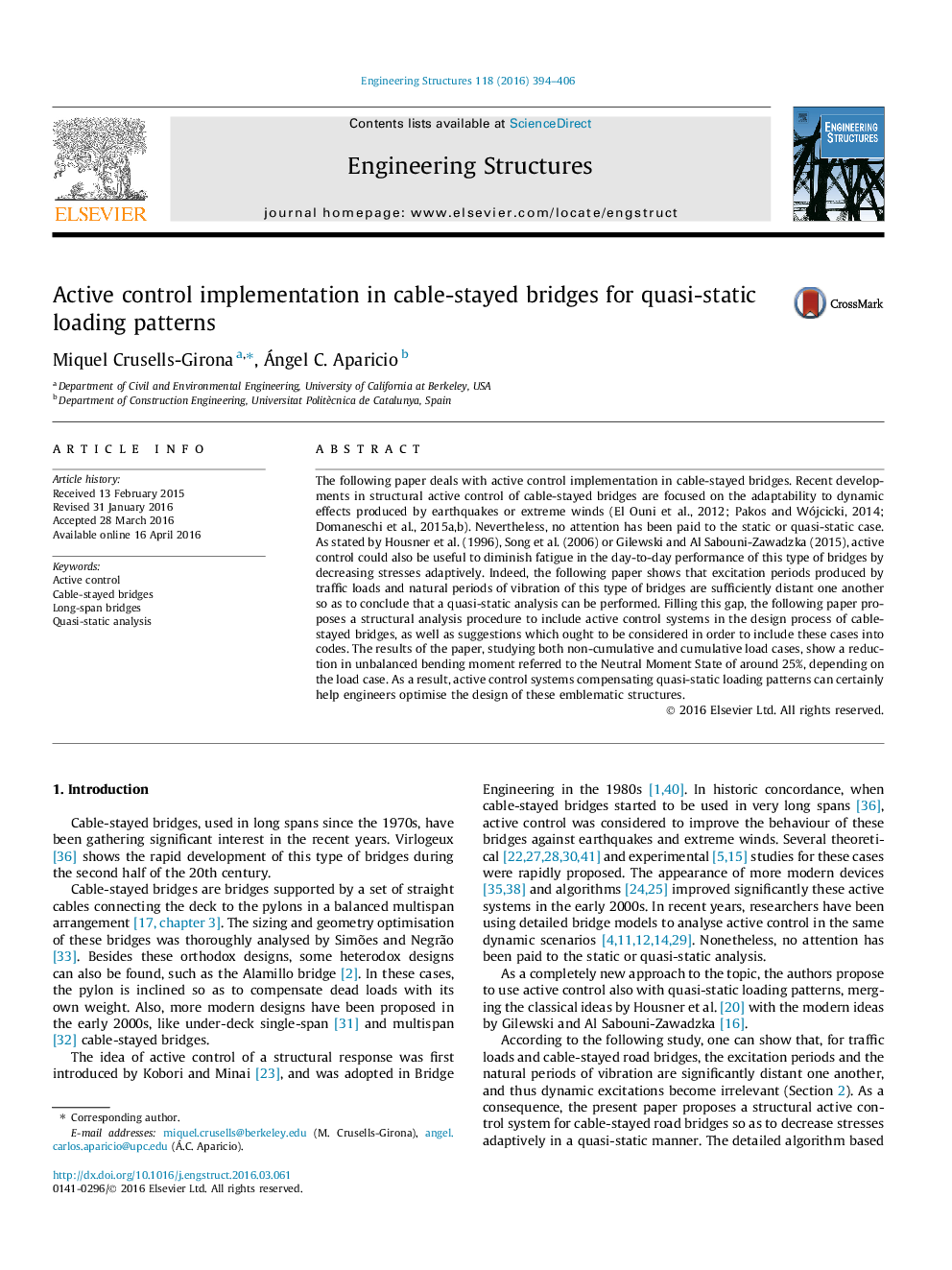| Article ID | Journal | Published Year | Pages | File Type |
|---|---|---|---|---|
| 265747 | Engineering Structures | 2016 | 13 Pages |
•The paper covers active control implementation in cable-stayed bridges for quasi-static loads, as opposed to the typical approach for extreme winds or earthquakes.•The authors show that natural vibration of these bridges and their excitation periods are sufficiently distant one another, hence a quasi-static analysis is available.•A reference state for the control system, the Neutral Moment State, together with a bending moment-axial force gain function are presented.•Both a non-cumulative and a cumulative load pattern are analysed for a particular bridge, with reduction in unbalanced bending moments of 27.1% and 22.8%, respectively.•Considerations to include active control in codes are stated, based on probabilistic risk assessment.
The following paper deals with active control implementation in cable-stayed bridges. Recent developments in structural active control of cable-stayed bridges are focused on the adaptability to dynamic effects produced by earthquakes or extreme winds (El Ouni et al., 2012; Pakos and Wójcicki, 2014; Domaneschi et al., 2015a,b). Nevertheless, no attention has been paid to the static or quasi-static case. As stated by Housner et al. (1996), Song et al. (2006) or Gilewski and Al Sabouni-Zawadzka (2015), active control could also be useful to diminish fatigue in the day-to-day performance of this type of bridges by decreasing stresses adaptively. Indeed, the following paper shows that excitation periods produced by traffic loads and natural periods of vibration of this type of bridges are sufficiently distant one another so as to conclude that a quasi-static analysis can be performed. Filling this gap, the following paper proposes a structural analysis procedure to include active control systems in the design process of cable-stayed bridges, as well as suggestions which ought to be considered in order to include these cases into codes. The results of the paper, studying both non-cumulative and cumulative load cases, show a reduction in unbalanced bending moment referred to the Neutral Moment State of around 25%, depending on the load case. As a result, active control systems compensating quasi-static loading patterns can certainly help engineers optimise the design of these emblematic structures.
